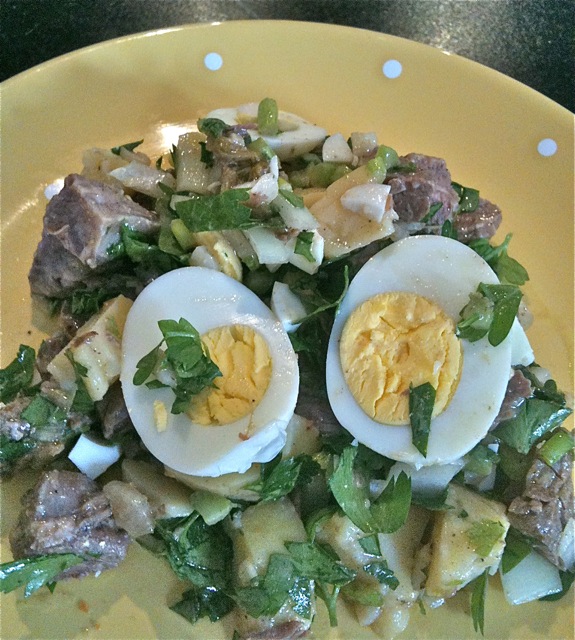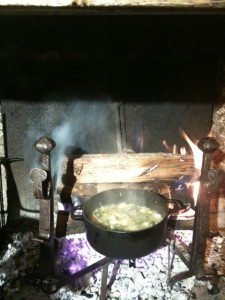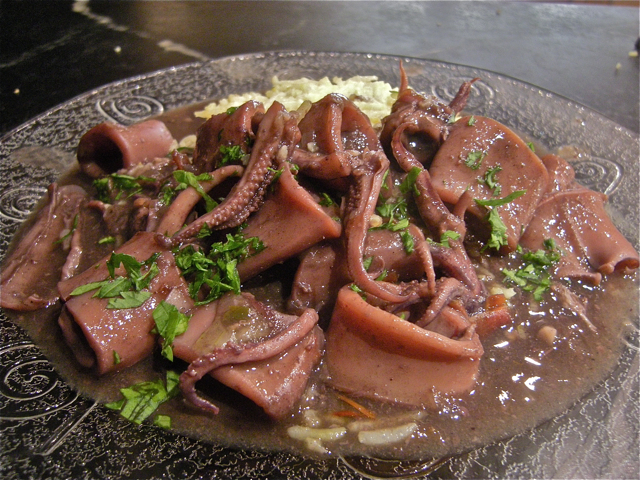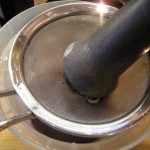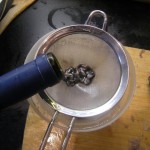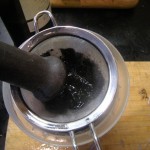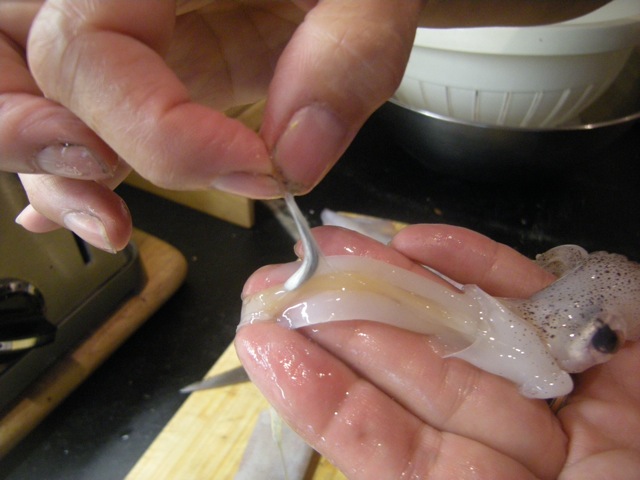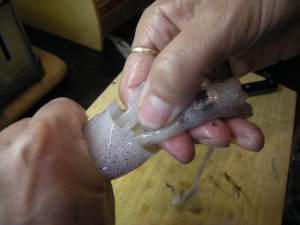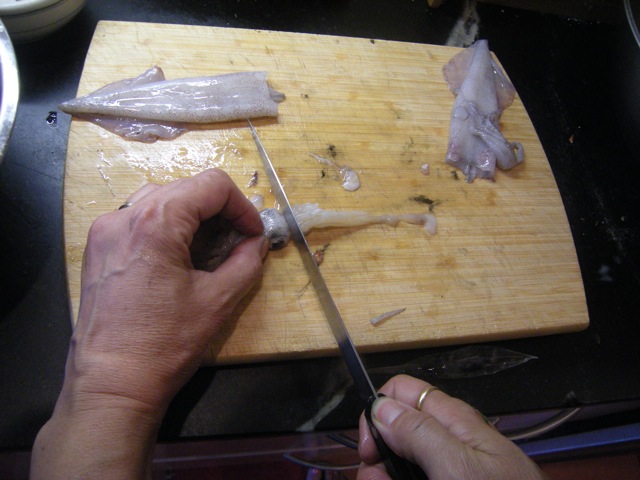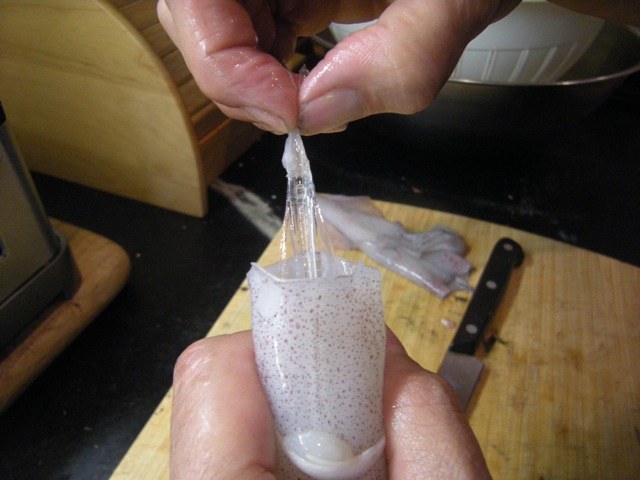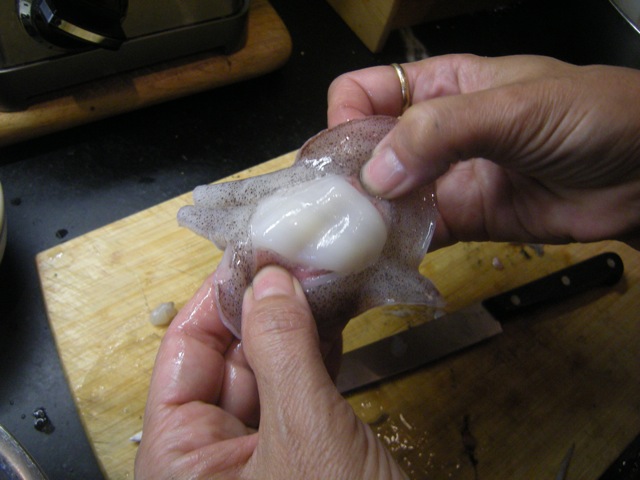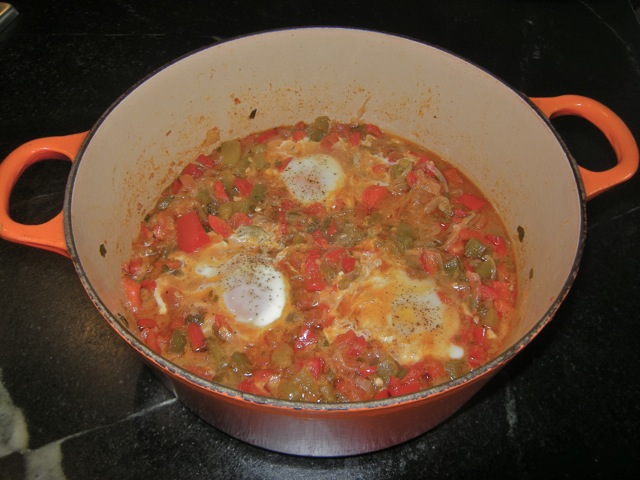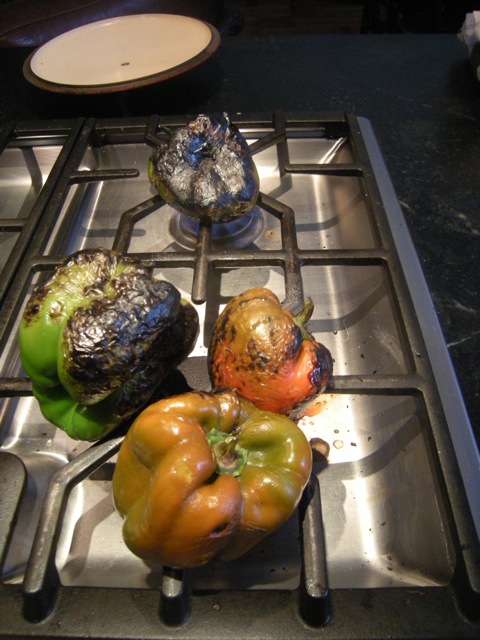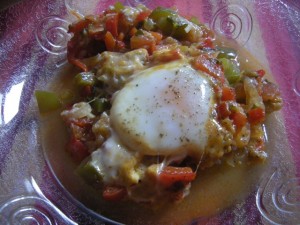Feierstengszalot this what they call this delicious salad in the Grand-Duchy of Luxembourg. As a literal translation in English it means: Flintstone salad, or in French une salade de silex! I can assure you it tastes better than it sounds. But why does this delicious salad made out of left overs of pot roast bear this name? Certainly an investigation I will conduct during my next trip to Luxembourg. My husband, Pierre Joris a native of Luxembourg, doesn’t know either but he made it for lunch yesterday and it was truly delicious. A few nights ago I had made a Pot au Feu —pot roast— and he used the leftovers to compose his version of the Feierstengszalot. So yes, first you have to make a pot roast, which I highly recommend it in this season and you can find my recipe here.
Pierre’s Feierstengszalot
Cut the leftover of the pot roast meat into small pieces— (maybe the meat was tough and black in the old day and might have looked and tasted like flint-stones?
Add diced raw celery, diced boiled potatoes, a lot of finely chopped onions and lots of chopped parsley.
Dress with a Dijon mustard vinaigrette: 1 tbsp mustard, 1 tbsp wine vinegar, 3 tbsp oil of olive oil, 1 crushed garlic clove.
Garnish with slices of hard boiled egg.
In the French version they add left over of cooked carrots, turnips and diced cornichons. Capers, watercress, shallots, chives, dill & tarragon are in the original Luxembourgian recipe but we didn’t have any so Pierre made due with what was available. In cooking, unlike in baking or pastry, there is always for creativity & adaptation!


